Train your chess with Rucha Pujari
WFM Rucha Pujari conducted a coaching camp with the young budding talents in Nagpur for a week. The seven days of training focused on all aspects of play, right from the opening, different middlegame patterns, endgames, studies, blindfold chess etc. Through this article, Rucha would like you to learn a thing or two from what she taught at the camp. There's a one-hour test waiting for you, and along with it a wealth of chess information to help you improve at the game.
Chess Coaching Camp in Nagpur by Rucha Pujari
I was invited to conduct a chess coaching camp in Nagpur from 7th - 13th July 2016. It was great to interact with upcoming players and share my knowledge with them. Those were the seven days packed with chess, learning and fun.
I could have just published the coaching camp report here. While it would have been fun to read, it wouldn't have helped you become stronger as a chess player. In chess, like any other sport, the best way to improve is practice. You have to make your brain work. Hence, I present to you five test positions, which each and every aspiring and ambitious chess player must try to solve.
I recommend that you take out your chess board and pieces (they are somewhere in the attic!), setup the positions given below and try to solve the test in the stipulated time that is given. The reason for using a chess set, rather than solving the positions from the computer or mobile screen, is that it give you a tournament-like feel. After all we play our games in tournaments on a chess board. The total thinking time is one hour. Here are the five test positions:
Position 1
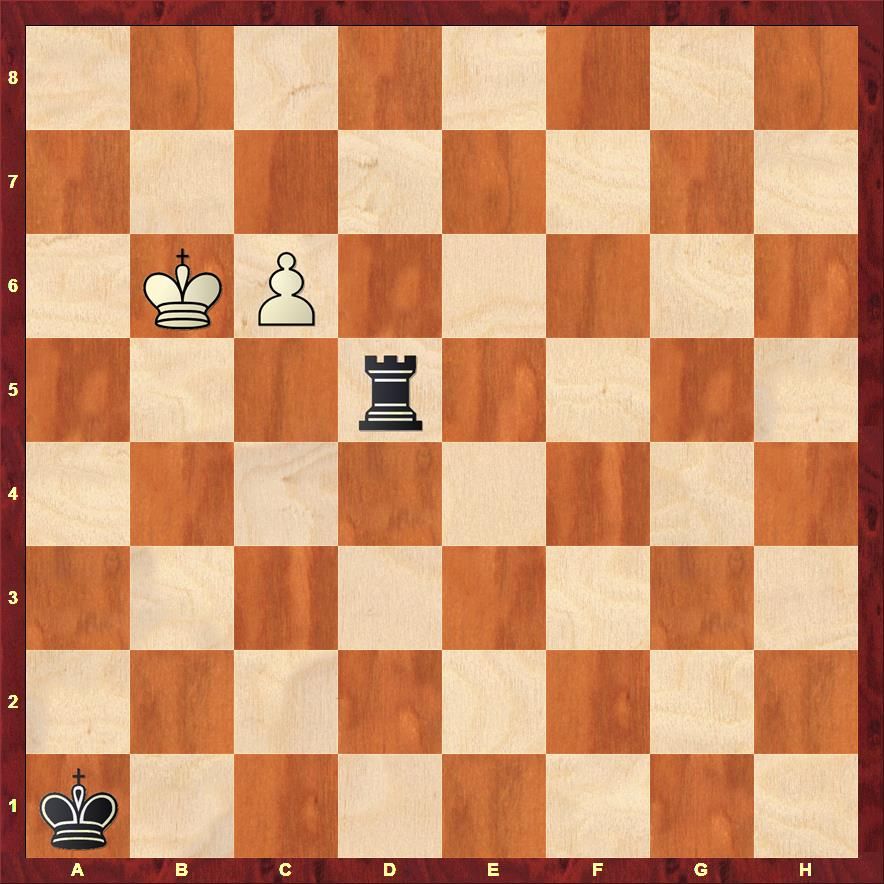
Position 2
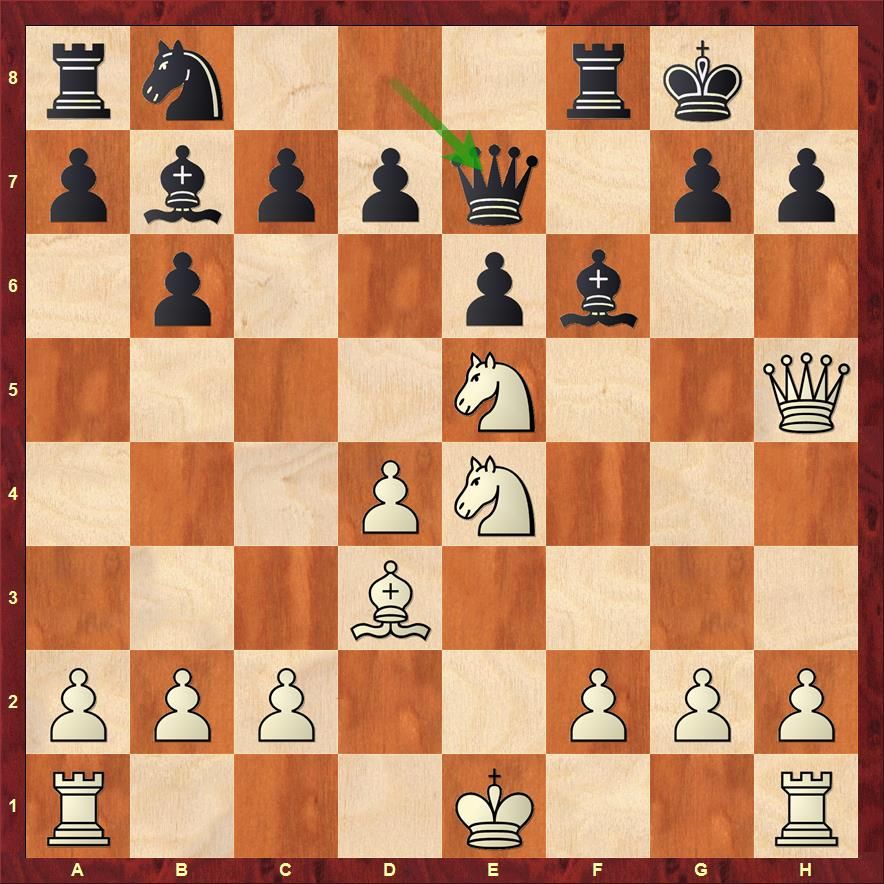
Position 3
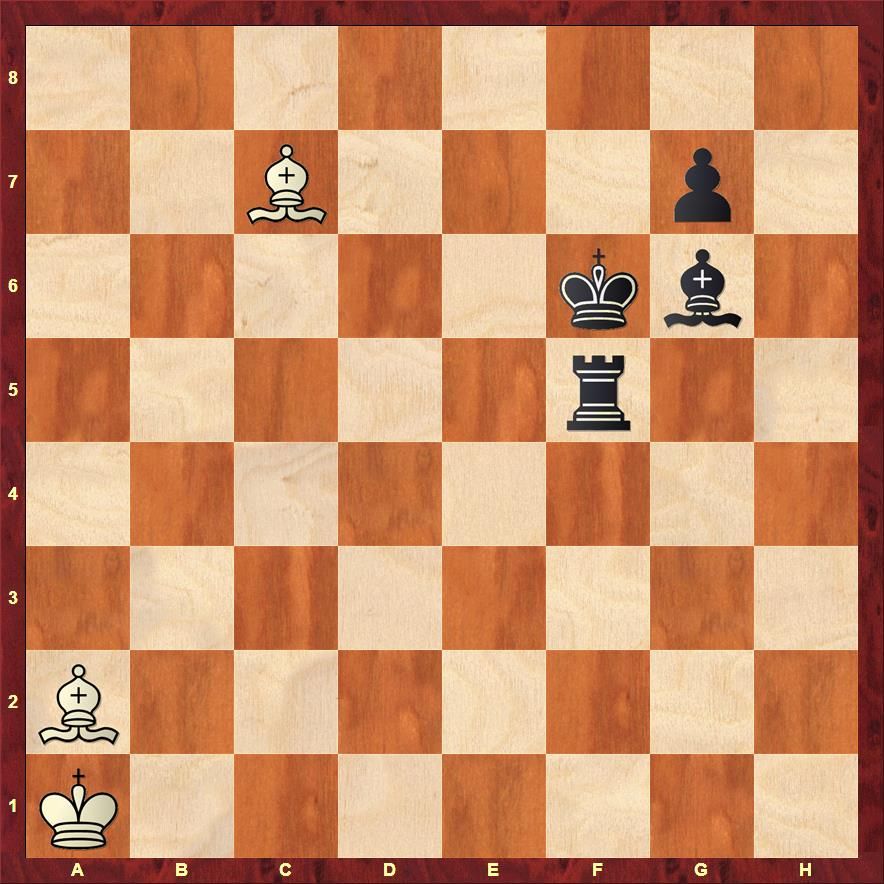
Position 4
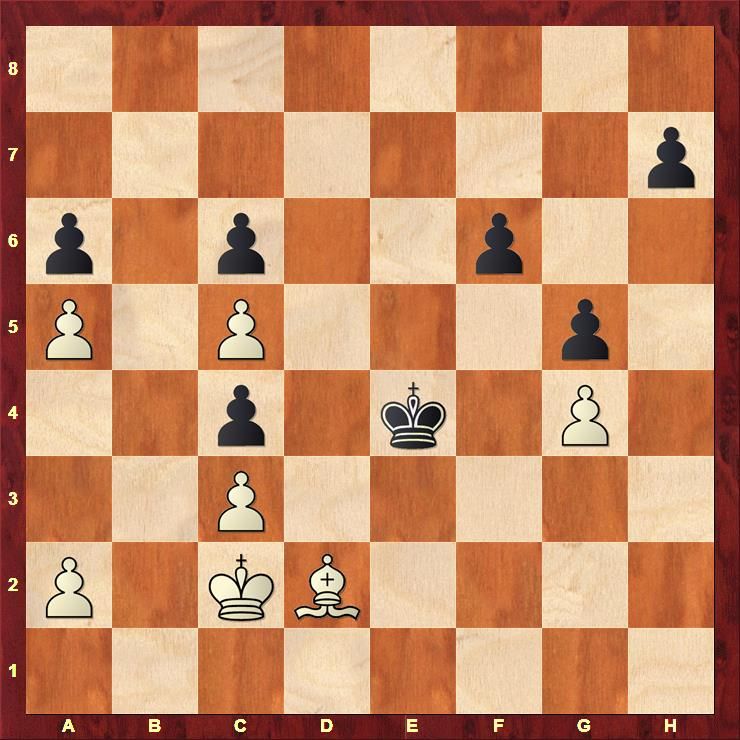
Position 5
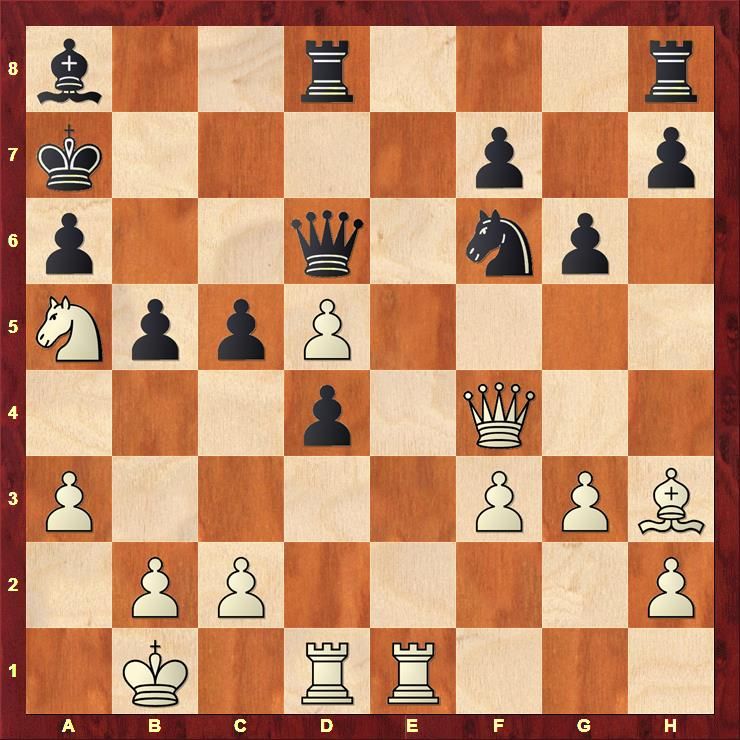
The answers to the above positions are presented at the end of the article.
The Coaching Camp report
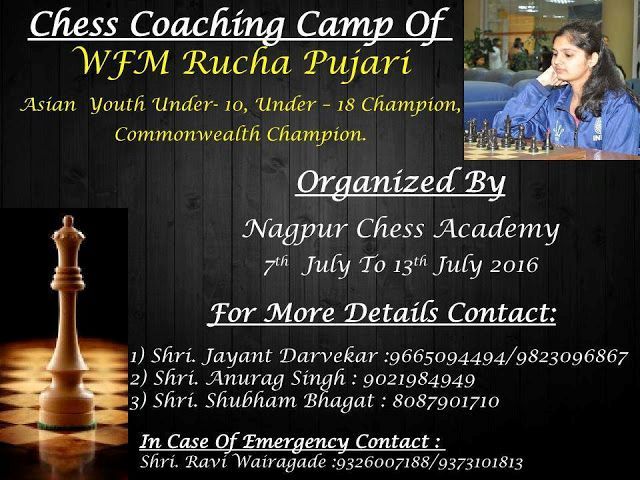
Topics Covered:
- · Famous and instructive games
- · Openings – Introduction
- · Knowing the World Champions
- · Solving – how to think in a position, correct assessment and thought process
- · Improving calculating ability and looking for new ideas
- · Defending techniques
- · Building the basic foundation in all areas
- · Must-know endgame position and techniques
- · Puzzles and learning chess in fun ways
- · Additional guidance besides the chess board
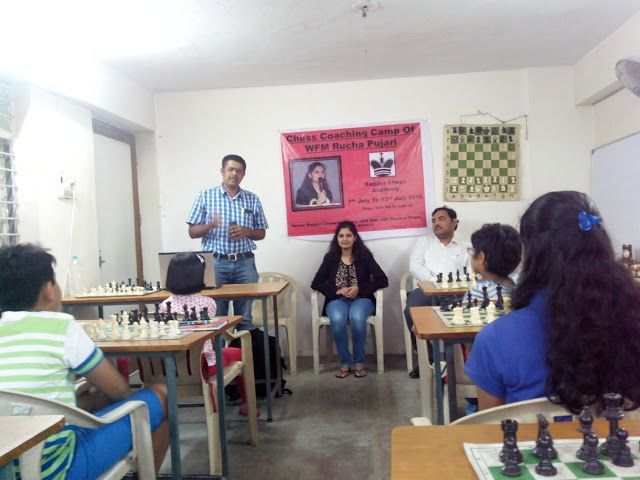
DAY 1
The camp was inaugurated, followed by an interactive session with parents. We started with a very interesting game Lasker – Thomas, where White checkmates Black with the move 0-0-0!
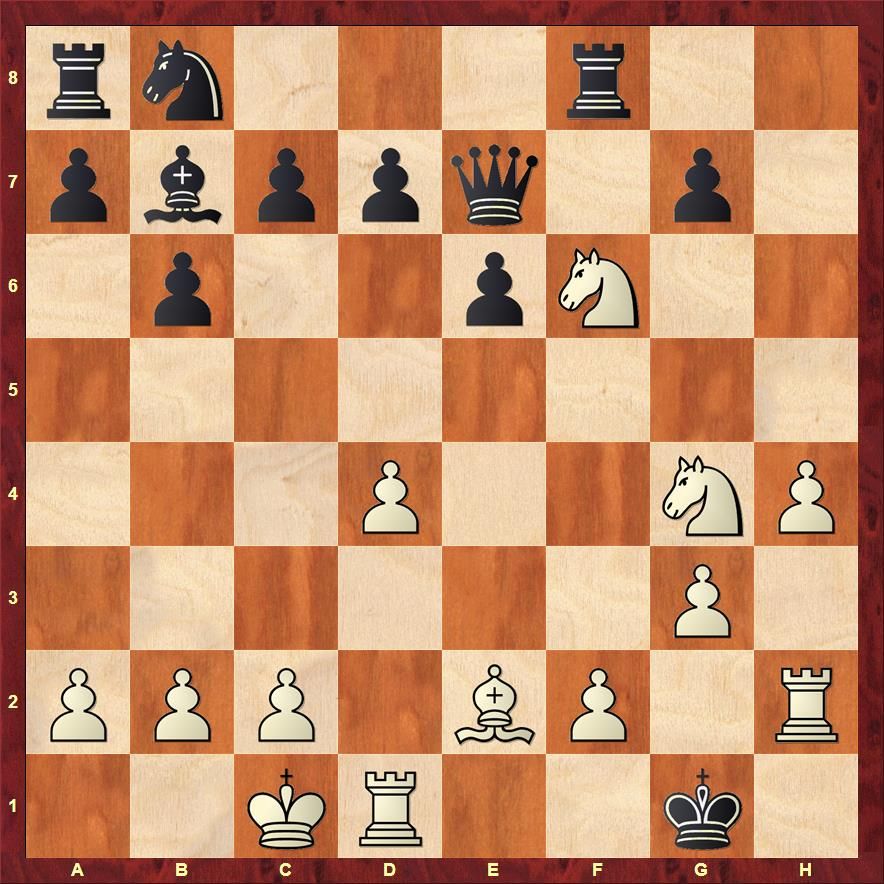
Then we played a class game, where students were given a position to remember for few minutes and then to produce on their boards - blindfold chess. Initially I gave with few pieces, and then made it more challenging with complex middle game positions. All did really well, so I gave them more difficult random study like positions and I was impressed that the students accepted the challenge and produced them correctly on their boards. I gave them more visualization questions. We saw some puzzles and played blitz games at the end of the session.
Day 2
We started with the famous Adams – Torre game, letting them understand the ideas and guess the moves. For all those who haven't seen this amazing game here it is.
[Site "New Orleans,LA"]
[Date "1920.??.??"]
[Round "?"]
[White "Adams, Edwin Ziegler"]
[Black "Torre Repetto, Carlos"]
[Result "1-0"]
[ECO "C62"]
[Annotator "ChessBase"]
[PlyCount "45"]
[EventDate "1920.??.??"]
[EventType "game"]
[EventRounds "2"]
[EventCountry "USA"]
[SourceTitle "MainBase"]
[Source "ChessBase"]
[SourceDate "1999.07.01"]
4... Qf6 {--> Guez-Samama}) (4... Nf6 5. e5 (5. Nc3 {--> Campora-Chiburdanidze}
) (5. Bg5 {--> Sax-Tseshkovsky} Be7 6. Nc3 {--> main line}) 5... Qe7 {-->
Jansa-Ermenkov} (5... dxe5 {--> Gufeld-Georgadze}) 6. Be3 Ng4 $10) 5. Bb5 Bd7 (
5... Nf6 {--> Niedermayer-Speckner}) (5... Nge7 {--> Markovic-Nikolic}) 6. Bxc6
Bxc6 7. Nc3 (7. Bg5 f6 {--> Morphy-Harrwitz} (7... Nf6 {--> Anderssen-Paulsen})
) 7... Nf6 (7... Qf6 {--> Tringov-Acimovic}) 8. O-O (8. Bg5 $142 {-->
Gawliczek-Goebel} Be7 9. O-O-O) 8... Be7 9. Nd5 Bxd5 10. exd5 O-O 11. Bg5 c6
12. c4 cxd5 (12... Nxd5 13. cxd5 Bxg5 14. Nxg5 Qxg5 15. dxc6 bxc6 16. Qxd6) 13.
cxd5 Re8 14. Rfe1 a5 15. Re2 Rc8 $2 (15... h6 $142) 16. Rae1 Qd7 17. Bxf6 Bxf6
18. Qg4 $1 Qb5 19. Qc4 $3 Qd7 20. Qc7 $3 Qb5 21. a4 $1 (21. Qxb7 $2 Qxe2 22.
Rxe2 Rc1+ $19) 21... Qxa4 22. Re4 Qb5 23. Qxb7 $1 1-0
Then we went back to the history of Chess, learning about the World Champions. It was followed by the analyzing and discussing the game between Fischer – Spassky.
DAY 3
We studied endgames, a lot of endgames! Starting from the basic, we advanced to the complex ones. We studied not only positions, but ideas and patterns. We discussed some of the theoretical positions like Lucena position and Saavedra position among others. Like after every session, they were given homework positions to solve.
DAY 4
We started a new topic today – defensive ideas. We all like to attack, but it is also important to be able to defend the positions. It is important to be able to look for resources, to save or equalize the position.
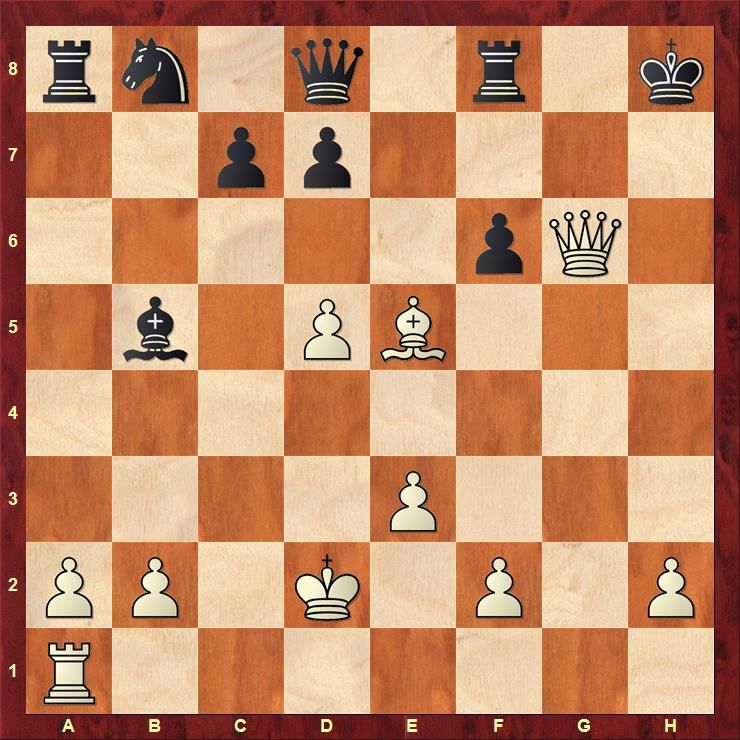
[Site "Soviet Union"]
[Date "1979.??.??"]
[Round "?"]
[White "Gutman, Lev"]
[Black "Vitolinsh, Alvis"]
[Result "0-1"]
[ECO "E46"]
[BlackElo "2430"]
[SetUp "1"]
[FEN "rn1q1r1k/2pp4/5pQ1/1b1PB3/8/4P3/PP1K1P1P/R7 b - - 0 19"]
[PlyCount "17"]
[EventDate "1979.??.??"]
[EventType "game"]
[EventRounds "9"]
[EventCountry "URS"]
[SourceTitle "EXT 2010"]
[Source "ChessBase"]
[SourceDate "2009.11.30"]
a counter check!}) 21... Qg7 22. Qh5+ Kg8 23. Bd4 c5 24. Bxc5 Rc8 25. f4 Na6
26. Bf2 Nb4+ 27. Ke2 Rxa2 0-1
Then after a small break, we resumed to study a very instructive and crucial game of the World Championship Match Topalov – Anand, game 12. Topalov’s defense and Anand’s attacking ideas were quite impressive, learned a lot from this game.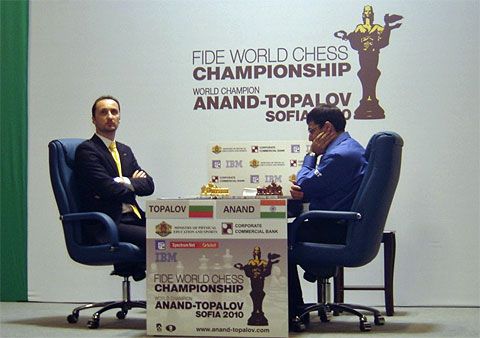
DAY 5
We started with understanding the symbols in chess and followed by learning how to note down and read the moves, variations in a correct way. This will help the students understand easily when they will start studying on their own, using books and databases.

We solved middlegame tactics, and I checked their notes and corrected whenever necessary. We then analyzed one of the famous attacking games, Kasparov – Topalov. (check at the end of the article)
DAY 6
This day was all about openings. I explained to them opening principles and general ideas. We then discussed the general ideas of the different openings, and I gave them notes and names about different lines in 1.d4, 1.e4, 1.c4 and other first moves.
DAY 7
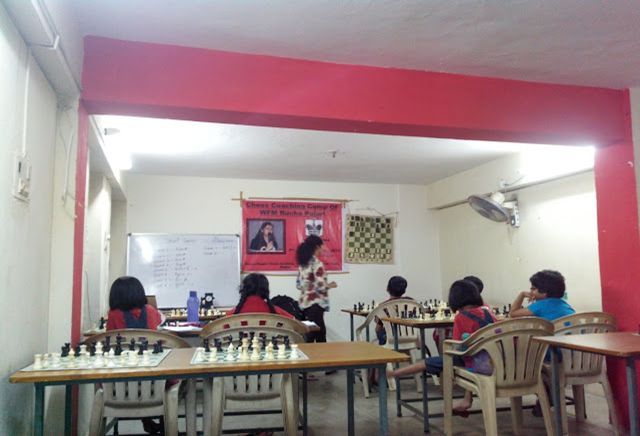
We started with learning some interesting facts about chess, followed by looking at short games. Students really enjoyed this session. It was followed with an interactive session with parents.
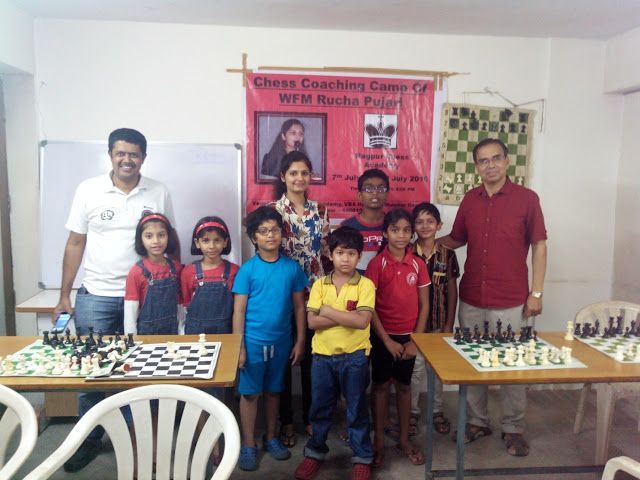
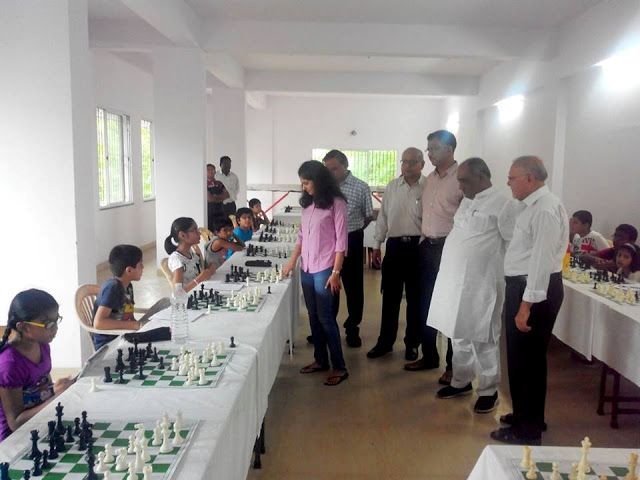
I would like to thank Nagpur Chess Academy for organizing and inviting me for the camp. It was a great opportunity for me to be able to interact with upcoming players from Nagpur and encourage them for their future.
I think it is wonderful that Nagpur Chess Academy has created a platform for the players to grow and progress. Many thanks to Mr. Pagay sir and family for their wonderful hospitality and my gratitude to Mrs. Kanchan Pagay for making my stay nice and comfortable.
Solutions to the five tests
Solution 1
[Site "?"]
[Date "????.??.??"]
[Round "?"]
[White "Saavedra Position"]
[Black "?"]
[Result "*"]
[Annotator "Rucha Pujari"]
[SetUp "1"]
[FEN "8/8/1KP5/3r4/8/8/8/k7 w - - 0 1"]
[PlyCount "13"]
position is surprisingly winning for White.} 1. c7 Rd6+ {Black is happy to
give up the Rook in exchange for the c pawn to achieve draw, but White denies
any oppurtunity.} 2. Kb5 (2. Kc5 Rd1 $1 $11) 2... Rd5+ 3. Kb4 Rd4+ 4. Kb3 Rd3+
5. Kc2 Rd4 $5 6. c8=R $1 {Threatning mate from a8} (6. c8=Q $4 Rc4+ $11) 6...
Ra4 7. Kb3 $18 {And White wins due to the double threat.} *
Solution 2
[Site "?"]
[Date "1911.??.??"]
[Round "?"]
[White "Lasker, Ed"]
[Black "Thomas, G."]
[Result "1-0"]
[ECO "A83"]
[Annotator "Rucha Pujari"]
[SetUp "1"]
[FEN "rn3rk1/pbppq1pp/1p2pb2/4N2Q/3PN3/3B4/PPP2PPP/R3K2R w KQ - 0 11"]
[PlyCount "15"]
[EventDate "1911.??.??"]
the path of Black's King from here} Kxh7 12. Nxf6+ Kh6 (12... Kh8 13. Ng6#) 13.
Neg4+ Kg5 14. h4+ Kf4 15. g3+ Kf3 16. Be2+ Kg2 17. Rh2+ Kg1 18. Kd2# (18.
O-O-O#) 1-0
Solution 3
[Site "?"]
[Date "2016.12.20"]
[Round "?"]
[White "The perpetual bishops"]
[Black "?"]
[Result "*"]
[Annotator "Rucha Pujari"]
[SetUp "1"]
[FEN "8/2B3p1/5kb1/5r2/8/8/B7/K7 w - - 0 1"]
[PlyCount "8"]
[EventDate "2016.??.??"]
to the Black King.} Ke5 2. Bc7+ Kd4 {King cannot go in light squares due to
Bb1+} 3. Bb6+ Kc3 4. Ba5+ $1 $11 Rxa5 {and it's a stalemate!} *
Solution 4
[Site "?"]
[Date "2016.12.20"]
[Round "?"]
[White "Study by Rucha Pujari"]
[Black "?"]
[Result "*"]
[Annotator "Rucha Pujari"]
[SetUp "1"]
[FEN "8/7p/p1p2p2/P1P3p1/2p1k1P1/2P5/P1KB4/8 w - - 0 1"]
[PlyCount "14"]
[EventDate "2016.??.??"]
threatning to take the g4 Pawn and advance his king side Pawns.} 1. Bc1 $1 Kf3
2. Ba3 Kxg4 3. Bb4 $1 {The idea is simple, to create a stalemate net.} f5 4.
Kb2 f4 5. Ka3 f3 6. Ka4 f2 7. a3 {That's what you call digging your own grave,
but in a good sense!} f1=Q $11 *
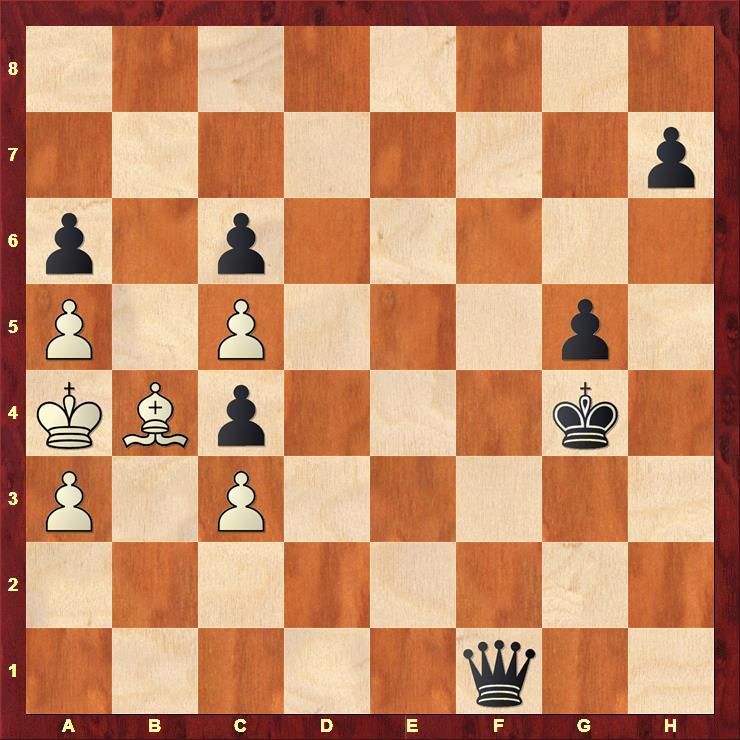
Solution 5
[Site "Wijk aan Zee"]
[Date "1999.01.20"]
[Round "4"]
[White "Kasparov, Garry"]
[Black "Topalov, Veselin"]
[Result "1-0"]
[ECO "B07"]
[WhiteElo "2812"]
[BlackElo "2700"]
[Annotator "Rucha Pujari"]
[PlyCount "87"]
[EventDate "1999.01.16"]
[EventType "tourn"]
[EventRounds "13"]
[EventCountry "NED"]
[EventCategory "17"]
[Source "ChessBase"]
[SourceDate "1999.04.01"]
Bxh6 9. Qxh6 Bb7 10. a3 e5 11. O-O-O Qe7 12. Kb1 a6 13. Nc1 O-O-O 14. Nb3 exd4
15. Rxd4 c5 16. Rd1 Nb6 17. g3 Kb8 18. Na5 Ba8 19. Bh3 d5 20. Qf4+ Ka7 21. Rhe1
d4 22. Nd5 Nbxd5 23. exd5 Qd6 {White to play. The game follows a very nice and
interesting continuation.} 24. Rxd4 $1 cxd4 (24... Qxf4 25. Rxf4 {is just a
pawn down.}) 25. Re7+ $3 (25. Qxd4+ $6 Qb6 (25... Kb8 26. Re7) 26. Re7+ Nd7 $19
) 25... Kb6 (25... Qxe7 26. Qxd4+ Kb8 27. Qb6+ Bb7 28. Nc6+ Ka8 29. Qa7#) 26.
Qxd4+ Kxa5 27. b4+ Ka4 28. Qc3 $1 Qxd5 29. Ra7 Bb7 30. Rxb7 Qc4 31. Qxf6 Kxa3
32. Qxa6+ Kxb4 33. c3+ $1 Kxc3 34. Qa1+ Kd2 35. Qb2+ Kd1 36. Bf1 $1 Rd2 37. Rd7
$1 Rxd7 38. Bxc4 bxc4 39. Qxh8 Rd3 40. Qa8 c3 41. Qa4+ Ke1 42. f4 f5 43. Kc1
Rd2 44. Qa7 1-0
Beautiful Puzzles - ebook by Rucha Pujari
Rucha's first ebook Beautiful Puzzles is available on Amazon Kindle.
You can buy the book from the link given below
Note: All those who have subscribed to kindleunlimited can read the book for free.
For more information about the book you can read the ChessBase India article.
About the author

Rucha Pujari is a Woman FIDE Master from India. She fell in love with chess when she was six, and ever since has been actively competing in tournaments. Apart from chess she likes to read, paint, write, travel and take on new challenges. She has written around 35 articles in a weekly column of a very famous Marathi newspaper, where she talked about Chess and life of a sportsperson. She has also taken part in promoting the game in her city by starting the Ruchess Academy. She maintains a personal blog.
